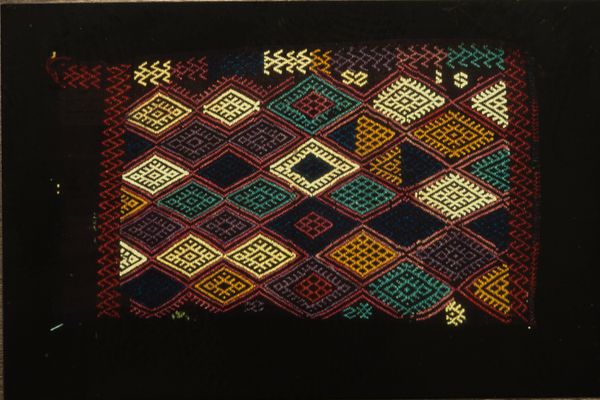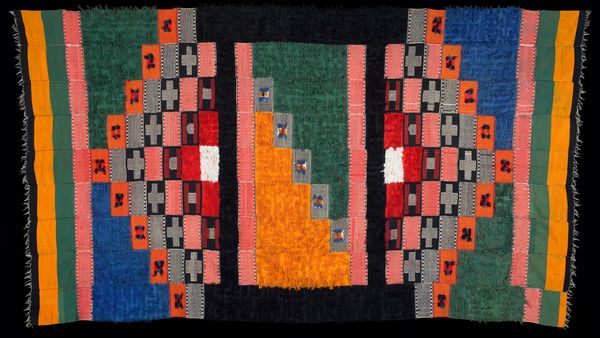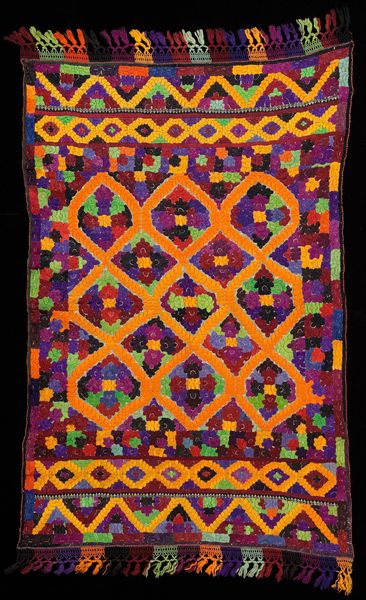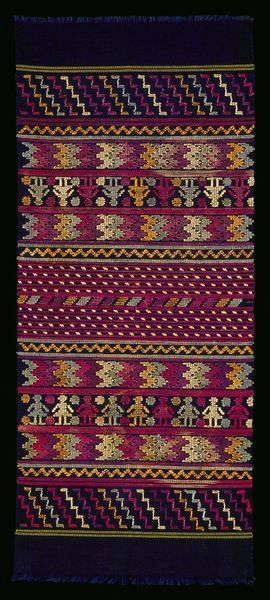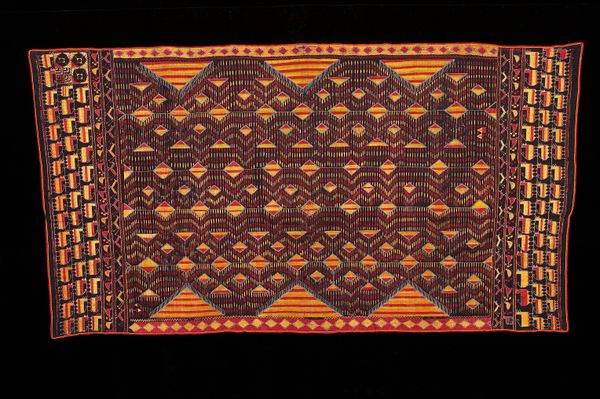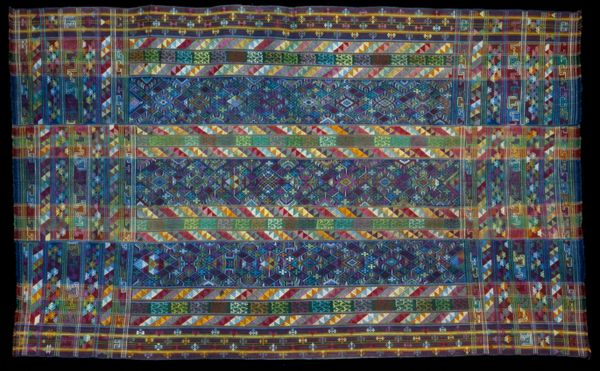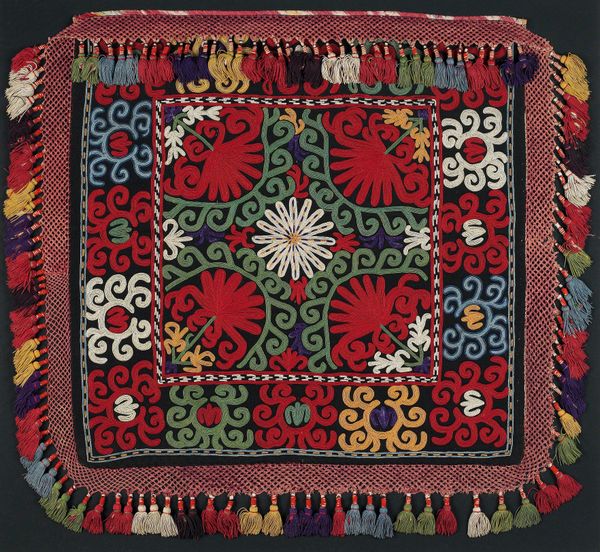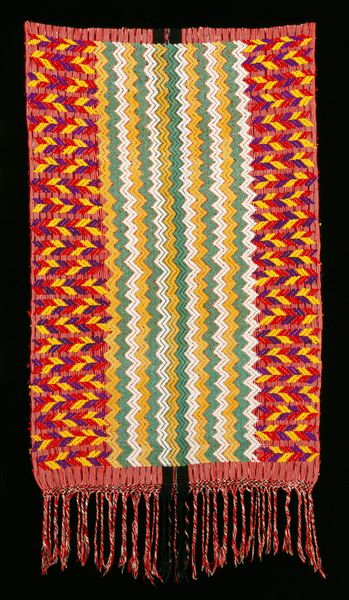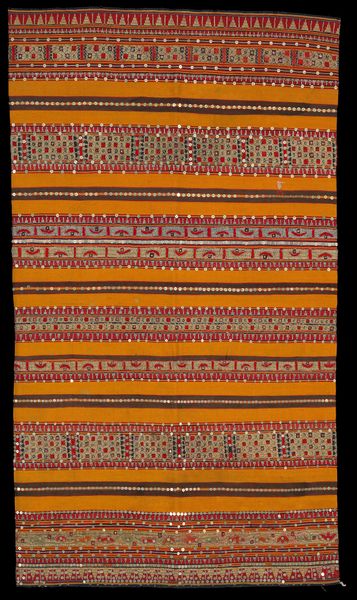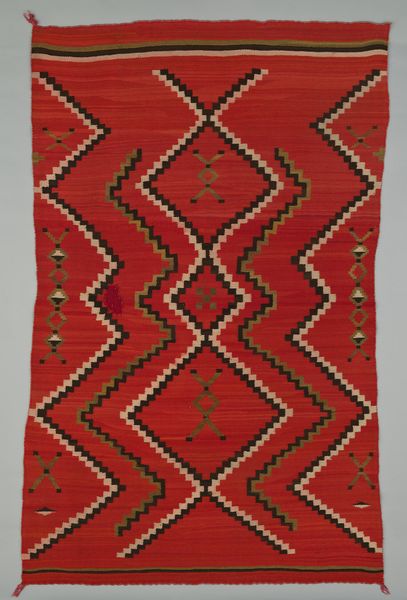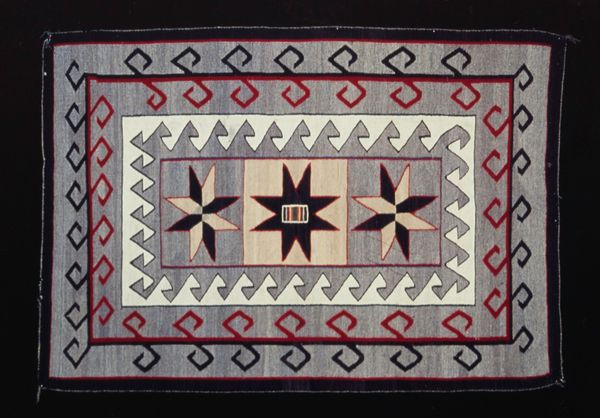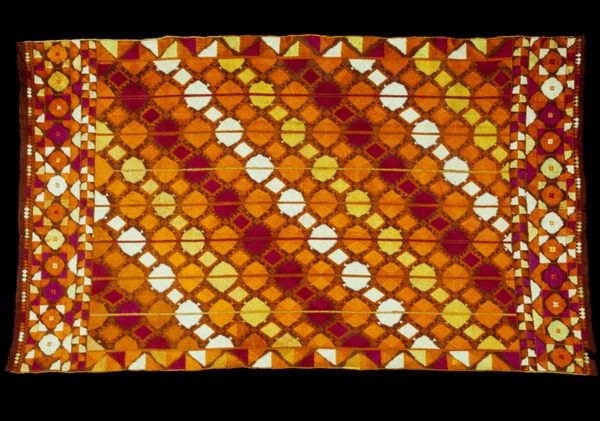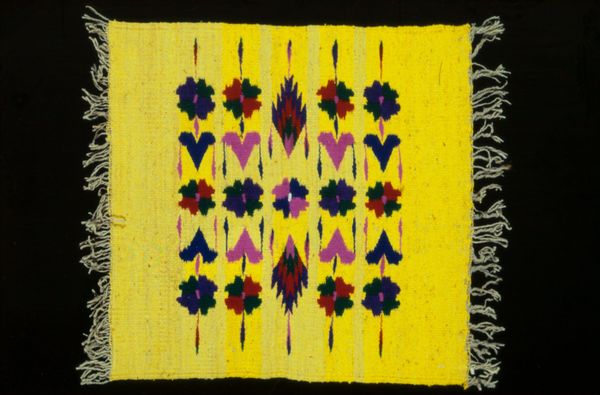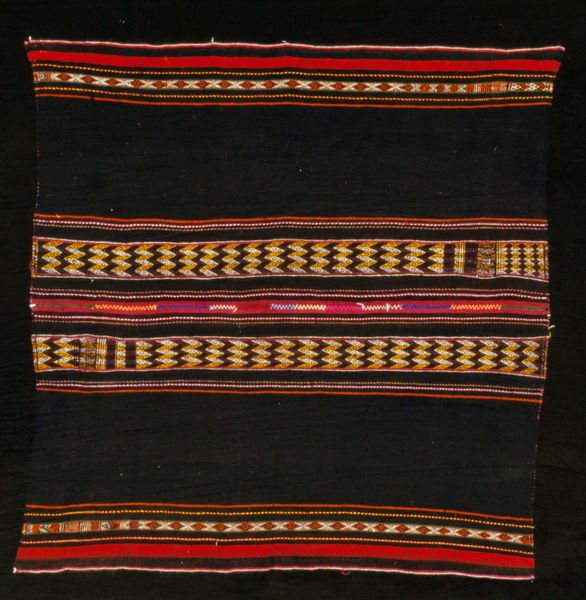
weaving, textile, wool
#
weaving
#
textile
#
wool
#
geometric pattern
#
geometric
#
islamic-art
#
decorative-art
#
decorative art
Copyright: Public Domain
Curator: At first glance, this is a dazzling field of color! A feast of gem-like shapes, though with a definite handmade quality. Editor: That’s a wonderful observation. This is a "Camel Bag," woven, likely, sometime in the 19th century. It's held in the collection of the Minneapolis Institute of Art, and crafted with wool using weaving techniques. Curator: The use of repeating geometric patterns strikes me as culturally significant. Given its context as Islamic art, these designs likely aren't arbitrary. There's meaning encoded within those diamonds and stepped motifs. Editor: Absolutely. The diamond motif, repeated across the face, signifies different things depending on cultural context. We have to think about the anonymous artist's intentions as part of a greater whole. Perhaps it served as protection on arduous travels across social and political borders. Curator: That aligns with what I understand; such symbols resonate, traveling and accumulating different associations. These objects transcend mere function; they serve as emblems. Do you see these inner shapes nested within the larger forms almost like echoing voices? Editor: I see those echos. They feel intimate, perhaps suggestive of familial bonds across generations connected through craft. Also consider how often such pieces are made by women. The practice links artistic creation with gendered labor and historical narrative. Curator: You're guiding us to a nuanced level. How might its function intersect with ideas about mobility? I wonder how heavy it got carrying all this luggage? Editor: Certainly the physical reality affects the communities along the routes. Nomadic identity challenges sedentary norms while trade and cultural exchange occurs within constraints influenced by gendered labor roles. What about the bag itself? It would function in society as a mobile piece of heritage. Curator: In its geometric organization, the weave presents visual reminders; echoes of identity and place. Editor: Ultimately, that's the power of this "Camel Bag," a portable manifesto showcasing individual talent intersecting broader historical, social realities experienced at one time. I see art intersecting community across time, echoing themes to a different place and audience now.
Comments
No comments
Be the first to comment and join the conversation on the ultimate creative platform.
